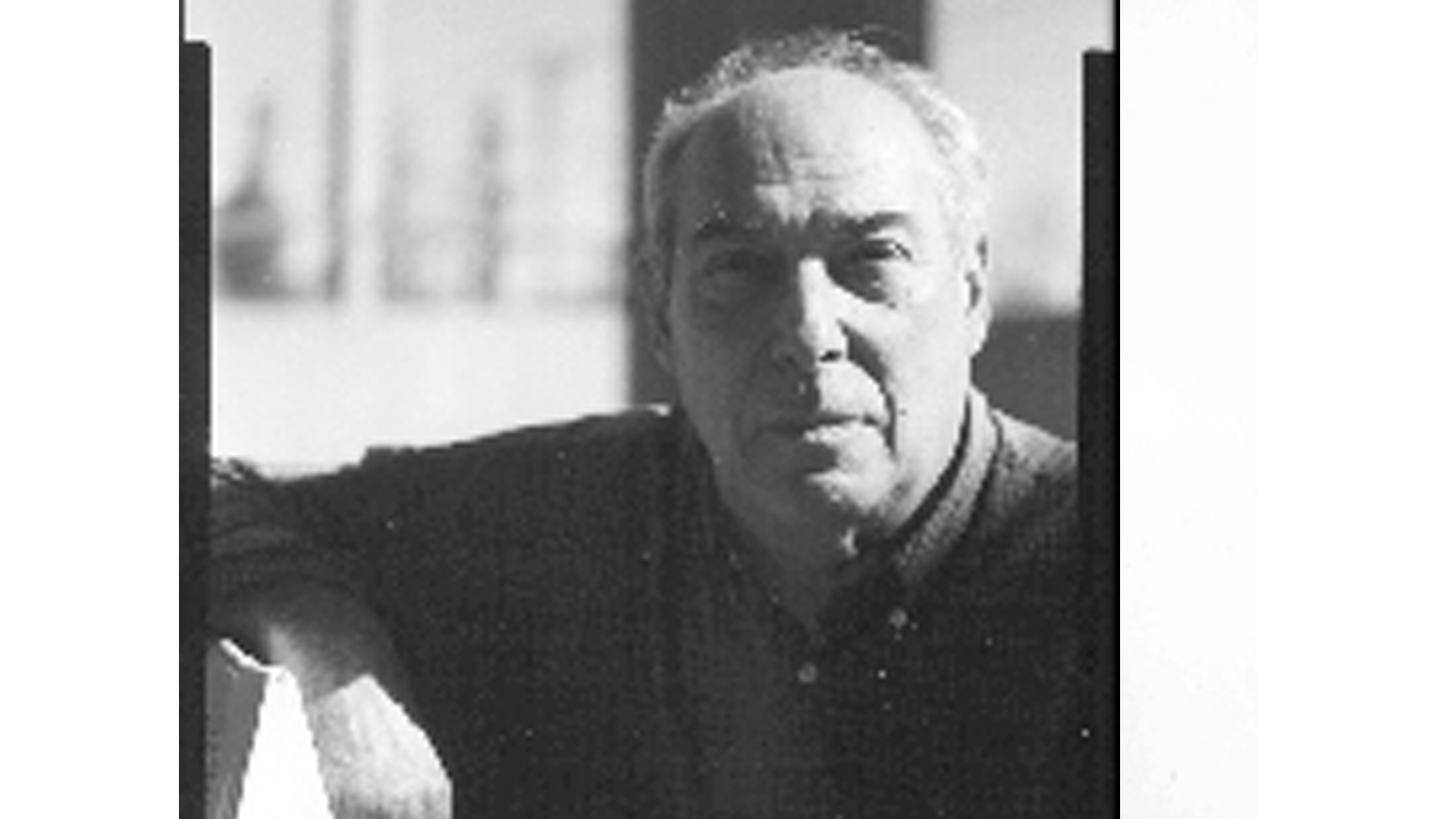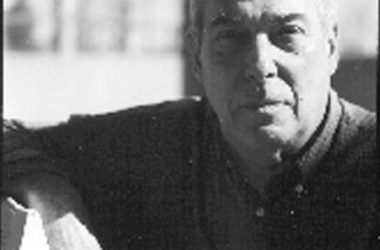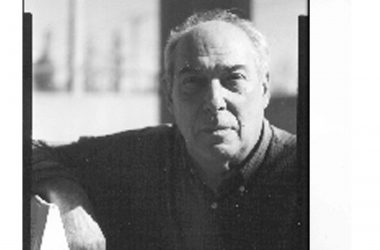By Noel Ignatiev
Theodore William Allen was born in 1919 to a middle-class family in Indiana. In 1929 the family moved to West Virginia, where Ted was, in his words, “proletarianized by the Great Depression.” He attended college for a couple of days after high school, but quit because he didn’t believe college encouraged independent thought. He joined the Communist Party in the 1930s and spent three years as a coal miner in West Virginia, until he was forced to leave because of a back injury. After coming to New York in 1948 he taught classes in economics at the Party’s Jefferson School. He was also active in community, civil rights, trade union and student organizing work. He worked in a factory, as a retail clerk, a mechanical design draftsman, an elevator operator, a junior high school math teacher, a mail handler and as the “Homework Hotline” for the Brooklyn Public Library. He left the Communist Party in 1958 and joined the Provisional Organizing Committee to Reconstitute the Communist Party, but left it in 1962, breaking with “Marxism-Leninism” soon after. Ted spent much of his last forty years researching the role of white supremacy in United States history, documenting and analyzing the development of the “white race” in the latter part of the seventeenth century. His research led to the two-volume Invention of the White Race. He died in Brooklyn in 1997.[1]
Ted was the first person to use the phrase “white-skin privilege.” Unlike those in the “Undoing Racism” industry or those who have made a fetish of “privilege politics,” Ted saw his studies and writing on the history and operation of the white-skin privilege system as a weapon in the class struggle. He insisted that the attachment of white workers to their race privileges was the chief cause of the failure of the working class in the U.S. to overturn capitalism, and that the struggle against white supremacy, entailing for white workers the repudiation of the white-skin privilege, was the key to revolutionary strategy.
Ted introduced me to the notion of the white-skin privilege that has been a defining element in my political life for nearly half a century, and I owe him an immeasurable political debt. To acknowledge my debt does not require that I keep silent about our disagreements. On the contrary, it requires that I state them as forthrightly as possible.
Ted traced the origins of white supremacy to a conscious decision by the plantation bourgeoisie of the tobacco-growing regions of the Chesapeake Bay in response to the problem they faced, how to control the labor force on whom the production of surplus value depended. The role of “conscious decision” was not peripheral but central to him.[2]
At first I accepted his explanation of the origin, but the more I thought about it, the less satisfying it became. While I do not doubt that elements in the dominant classes (and not only the dominant classes) conspire, I do not believe that great historic turns can be attributed to conspiracies. I was led initially to question Ted on this point by thinking about the origins of reformism in the labor movement, particularly during the rise of the CIO. Like the seventeenth century, the period that produced the CIO also presented revolutionary possibilities, possibilities that were contained by the form of labor organization that emerged dominant. No doubt decisions made by capitalist institutions, especially the Roosevelt administration and its left-wing auxiliaries, played a role in pushing the labor movement along a certain path and not another, and that the path taken limited the possible outcomes, but the triumph of reformism cannot be blamed on bourgeois machinations; one must look instead to its roots within the working-class movement. Similarly with the origins of the white-skin privilege, which certainly functioned, as Ted said it did, to suppress the revolutionary possibilities in the period it arose and subsequently.
The working-class movement reflects the influence of capital; but that is not to say that particular tendencies within it are the result of intervention by individual capitalists or groups of capitalists. The working-class movement contains various tendencies, each reflecting the situation of the worker in the capitalist system: some accept the permanency of capital, and seek an advantage in a competitive society; others embody the possibility of a society free of the capital relation, and act on the principle of universal solidarity. Which of these tendencies prevails in any situation “arises from conflicts between many individual wills, of which each in turn has been made what it is by a host of particular conditions of life. Thus there are innumerable intersecting forces, an infinite series of parallelograms of forces which give rise to one resultant—the historical event. This may again itself be viewed as the product of a power which works as a whole unconsciously and without volition.”[3]
Ted’s tracing the origins of white supremacy to a conscious decision presents an additional problem: the complete absence of any record of such a decision. Not only is there no record of such a decision, there are no records of debates among those in authority at the time or pamphlets arguing in favor of extending privileges to European settlers in order to cement their loyalty to the colonial regime. Ted acknowledged the lack, but attributed it to the destruction of the records, and insisted it does not matter.[4]
Ted was moved to adopt the idea of a conscious decision by his desire to combat the view, promoted by Carl Degler, Winthrop Jordan and others, that there was something in human nature, or at least the English psyche, that explains the rise of white supremacy. Ted felt, correctly, that Jordan’s explanation, which blames race prejudice and oppression on inherent “attitudes,” absolves the ruling class of responsibility and, no less important, makes it impossible to overturn these evils. Unfortunately, his explanation is based on the same fallacy as the theory of “Intelligent Design” in biology, which holds that the suitability of a feature to its function demonstrates that it was consciously designed to fulfill that function. As Darwin discovered the law of development of organic nature (a law so simple and in such conformance with the evidence that Thomas Henry Huxley, on hearing of it, exclaimed, “How stupid of me not to have thought of that!”—in modern parlance, facepalm!), Marx discovered the law of development of human society, historical materialism, which he formulated as follows:
In the social production of their life, men enter into definite relations that are indispensable and independent of their will, relations of production which correspond to a definite stage of development of their material productive forces. The sum total of these relations of production constitutes the economic structure of society, the real foundation, on which rises a legal and political superstructure and to which correspond definite forms of social consciousness. The mode of production of material life conditions the social, political and intellectual life process in general. It is not the consciousness of men that determines their being, but, on the contrary, their social being that determines their consciousness.[5]
Historical materialism explains the origin of white supremacy in the plantation colonies of mainland North America in the seventeenth century without resort to conspiracy theories or any other variant of “conscious decision,” and also without resort to theories of the inherent character of the English soul.
Why did slavery arise in the Chesapeake Bay, the West Indies, and the northeast coast of South America? There is no mystery: under certain conditions, slavery is the cheapest, and therefore to possessors the most advantageous, method of exploitation; it has existed widely throughout human history, going back to the ancient world, without regard to color.
Why were persons from Africa enslaved? Because they could be. The structure of West African societies produced a surplus population that could not be exploited at home and who were systematically sold by a ruling elite, for whom solidarity of color had no meaning, to others who had use for their labor-power.
So far I think Ted would agree.
Why were persons from Africa the only ones who became in general the victims of lifetime hereditary slavery? Here is where it gets difficult. Barbara Jeanne Fields provides a good deal of the explanation:
…Ultimately, the only check upon oppression is the strength and effectiveness of resistance to it.
Resistance does not refer only to the fight that individuals, or collections of them, put up at any given time against those trying to impose on them. It refers also to the historical outcome of the struggle that has gone before, perhaps long enough to have been hallowed by custom or formalized in law… The freedoms of lower-class Englishmen, and the somewhat lesser freedoms of lower-class Englishwomen… emerged from centuries of day-to-day contest, overt and covert, armed and unarmed, peaceable and forcible, over where the limits lay… Each new increment of freedom that the lower classes regarded as their due represented the provisional outcome of the last round in a continuing boxing-match and established the fight weights of the contenders in the next round.
In the round that took place in early colonial Virginia, servants lost many of the concessions to their dignity, well-being and comfort that their counterparts had won in England. But not all. To have degraded the servants en masse would have driven the continuing struggle up several notches, a dangerous undertaking considering that the servants were well-armed, that they outnumbered their masters, and that the Indians could easily take advantage of the inevitably resulting warfare among the enemy. Moreover, the enslavement of already arrived immigrants, once news of it reached England, would have threatened the sources of future immigration. Even the greediest and most short-sighted profiteer could foresee disaster in any such policy…
Some of these same considerations argued against employing African-descended slaves for life on a large scale; others did not. Needless to say, adverse publicity did not threaten the sources of forced migration as it did those of voluntary migration. Much more important: Africans and Afro-West Indians had not taken part in the long history of negotiation and contest in which the English lower classes had worked out the relationship between themselves and their superior. To put it another way: when English servants entered the ring in Virginia, they did not enter alone. Instead they entered in company with the generations who had preceded them in the struggle; and the outcome of those earlier struggles established the terms and conditions of the latest one. But Africans and Afro-West Indians did enter the ring alone. Their forebears had struggled in a different arena, which had no bearing on this one….
Africans and Afro-West Indians were thus available for perpetual slavery in a way that English servants were not. Indeed, Virginians could purchase them ready-enslaved and pre-seasoned…[6]
Although Fields’s explanation as quoted above accounts for some things, it does not account for racial oppression (which Ted defined as “the reduction of all members of the oppressed group to one undifferentiated social status, beneath that of any member of the oppressor group”[7]). But she isn’t finished:
Race as a coherent ideology did not spring into being simultaneously with slavery, but took even more time than slavery did to become systematized…. People are more readily perceived as inferior by nature when they are already seen as oppressed. Africans and their descendants might be, to the eyes of the English, heathen in religion, outlandish in nationality, and weird in appearance. But that did not add up to an ideology of racial inferiority until a further historical ingredient got stirred into the mixture: the incorporation of Africans and their descendants into a polity in society in which they lacked rights that others not only took for granted, but claimed as a matter of natural law.[8]
Ted made much of the presence in colonial Virginia of a number of persons of African descent who owned property and exercised civil and legal rights on a par with Englishmen of their rank. It is understandable, he maintained, that slaves would have low status, and their status implied nothing racial even if they were drawn entirely from one group, so long as non-slave members of the group enjoyed a status equal to other non-slaves. Racial oppression arose, according to Ted, with the debasement of free persons of color, and could only have come about as the result of conscious decision from above to “invent” a “white race.” It is true that the persons on whom Ted rested his argument existed. But they were always few in number and, more important, existed only in the early stages of the plantation system, before the great increase in the importation of laborers of African descent, which took place after 1660. As the number of Africans imported to be slaves went up, the proportion of free persons among Africans fell, the slave status came to be associated with African descent, the black skin became the badge of slavery, and the “free Negro” came to be seen as an anomaly. In 1736 Virginia Governor William Gooch wrote to the British Colonial Office, which had demanded an explanation of a Virginia law denying suffrage to free Negroes (a measure contrary to British and Virginia law and practice). Gooch wrote, “[The] Assembly thought it necessary, not only to make the Meeting of Slaves very penal, but to fix a perpetual Brand upon free Negroes and Mulattos by excluding them from the great Privilege of a Freeman, well knowing that they always did, and ever will, adhere to and favour the Slaves.” It is the only document Ted offered in support of his view of the role of conscious decision, and it does not prove what he claimed it did. Gooch justifies his decision not by the need to elevate the status of propertyless English but as a response to the sympathy shown by free persons of color to the slaves. But that sympathy would not have existed had their status been determined purely by their class position. It could only have arisen as a consequence of the racial oppression they already felt, and therefore could not have been a cause of it.[9]
It will be useful to compare developments in mainland and West Indian colonies.
Initially most mainland laborers were English, serving under temporary indenture, and lines between slavery and “freedom” were indistinct and of little importance. The natural result was a great deal of interaction and solidarity among the laborers. But as the planters imported more slaves–a decision motivated purely by monetary considerations, having nothing to do with “racial” preference–and codified slavery as a distinct form, the association of the black skin with slavery came to loom large, and by reflex all those not of African descent, and therefore not slaves, came to constitute a group or, in our terms, a “race,” on whose loyalty depended the stability of the social order. As for conscious decision on the part of the Chesapeake Bay planters to invent whiteness, I can do no better than to quote the French mathematician Pierre-Simon Laplace, who, when Napoleon commented that he did not see God anywhere in Laplace’s work, replied je n’avais besoin de cet hypothese.[10]
The association between skin-color and social status developed differently in the West Indies. There the need to control vast numbers of slaves combined with the small size of the English population compelled the planters to enroll in the militia persons of African descent and assign them a suitable social standing, thereby modifying the relation between color and status. The “mulatto” of the West Indies was the counterpart of the “poor white” of the mainland. It was in the West Indies, and not on the mainland, that conscious decision was crucial, and abundant records survive of the debates there. Discussing that process Ted wrote, “Down to the last moment, and past it, the sugar plantocracy resisted any attempt to undermine that [white] consciousness…”[11]
Finally, I hope it goes without saying—but I fear it will not—that nothing I have said here is meant to detract from my appreciation for the contributions Ted made to the class struggle. Note: This post is intended as a follow-up and response to links I posted in September to works of Sean Ahern and Jeff Perry. That post, with the links, is on my blog (although I think the link to Sean’s work is temporarily down due to a glitsch). Readers may reply directly to this post or to [email protected]
[1] In Memorium: Theodore W. Allen. Cultural Logic, vol. 8 (2001)
[2] Ted denounced the notion of an “unthinking decision.” See “Summary of the argument of The Invention of the White Race, by its author, Theodore W. Allen,” #84 (http://clogic.eserver.org/1-2/allen.html.
[3] Engels, Letter to Bloch, September 21, 1890. Italics in original.
[4] The Invention of the White Race, vol. 2, page 274.
[5] Preface to Contribution to Critique of Political Economy.
[6] “Slavery, Race and Ideology in the United States of America,” New Left Review 181 (May-June 1990).
[7] “Summary,”#14.Italics in original. It is the most useful definition I have heard.
[8] “Slavery, Race and Ideology”
[9] Ted discussed this letter in “Summary,” #84 and at greater length in volume 1 of Invention (which I do not have with me). I got the text of Gooch’s letter from Lerone Bennett, Jr., The Shaping of Black America, page 71.
[10] “I had no need of that hypothesis.” I have said nothing here about the Indians, who, while they were in some cases enslaved, were not the targets of a general policy of enslavement. I am sure that the explanation will be consistent with historical materialism, not “conscious decision.”
[11] The Invention of the White Race, volume 2, p244, and “Summary,” part 2.



